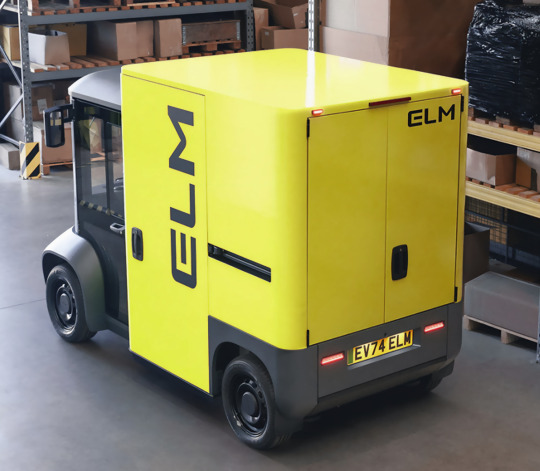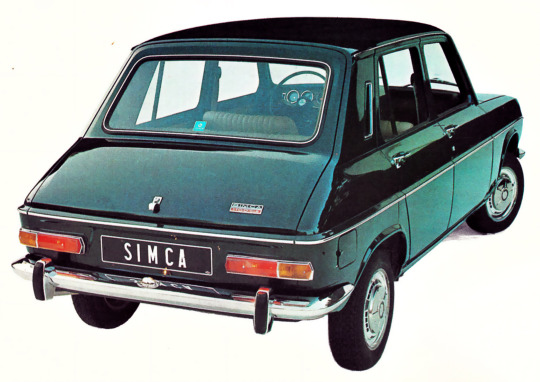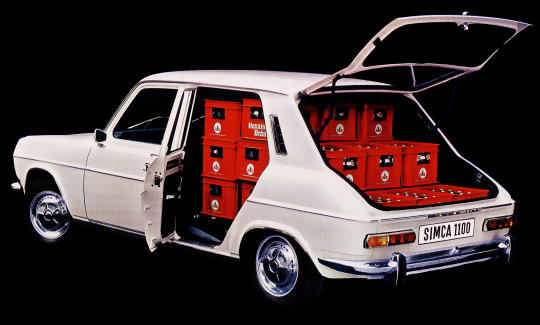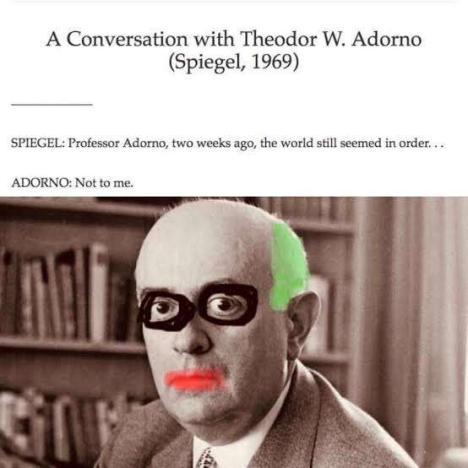#cubic capacity
Explore tagged Tumblr posts
Text
I ran some calculations and discovered kai has the energy output of 3 nuclear power plants.
In the first episode of season 11, Kai is seemingly able to heat a bell full of water instantly from (presumably) 25 Celsius to 40.
If we assume the bell is a cylinder 2.5m in diameter and 3m deep, that gives us 59 cubic metres of water. Convert to kilograms and we get 58,728 kilograms.
The specific heat capacity of water is 4200 j/kg/°C. Rearrange and we get an energy output of 3 gigawatts/joules.
The average nuclear power plant produces 1 gigawatt, and according to back to the future, you need 1.21 gigawatts to travel through time. And he was RELAXING.
In conclusion, Kai and Nya didn't need to stowaway on the iron doom. Kai could also power Ninjago city. Kai is a god.
#Ninjago#Ninjago Kai#Kai Ninjago#Ninjago season 11#secrets of the forbidden spinjitsu#Ninjago hands of time#He can also fly#his true potential is still ahead of him.#Kai Smith
286 notes
·
View notes
Text





ELM Evolv demonstrator, 2024. Prodrive Advanced Technology and Astheimer Design have revealed a ‘last mile’ L7e category electric quadricycle prototype with a cubic load capacity rivalling mid-size vans. At 3,240mm long, 1,450mm wide, 2,150mm high and weighing 850kg with batteries, the compact Evolv can accommodates a 1.6m tall Euro pallet with a 300kg payload in the main load area. The secondary load area, accessible through rear ‘barn doors’, provides additional space for a 1.2m tall Euro pallet and 200kg payload. Prodrive and Astheimer has established a new company, ELM Mobility, to take the project into the production readiness phase. The vehicle, which has a 20kWh battery, will offer a 100 mile range with sales starting in 2028 at a target price of around £25,000.
ELM Mobility
#ELM#ELM Mobility#ELM Evolv#prototype#demonstrator#test vehicle#Prodrive#Prodrive Advanced Technology#Astheimer Design#2024#2028#electric quadricycle#small van#electric van#last mile delivery#micro van#box van#Evolv
152 notes
·
View notes
Text

The Gorgon Liquified Natural Gas (LNG) processing plant, located on Barrow Island off the coast of Western Australia. Connected to two underwater gas fields in one of the largest subsea installations in the world, the Gorgon plant can process 15.6 million tons of LNG per year. It contains two holding tanks with a combined 12.6 -million-cubic-foot capacity and about four times as much steel as the Sydney Harbour Bridges.
-20.790183°, 115.448152°
Source imagery: Nearmap
173 notes
·
View notes
Text
CLASSIFIED OPERATION SUMMARY
DRC, Planning & Evaluation Office, Logistics & Infrastructure Division
Date Initiated: [REDACTED]
From: Assistant Director [REDACTED], Logistics & Infrastructure Division
To: Director [REDACTED]
Subject: Operation Overdue
Background
Paternity Compound 110 exceeded maximum capacity due to an influx of high-multiparity surrogates and operational delays due to the ongoing [REDACTED] in the Philadelphia metropolitan area. Overcrowding led to strained medical staff and diminished care standards.
Operation Overdue was launched to mitigate these risks. It was a cross-country air transport initiative intended to distribute surrogates to Paternity Compound 133 in Portland, far below occupancy capacity. This initiative required covert execution to avoid public attention and ensure all surrogates reached their destination intact.
Paternity Compound 110 (Philadelphia)
Paternity Compound 110 is an aging and overcrowded facility located in a repurposed commercial structure in Philadelphia. Designed to house a maximum of [REDACTED] surrogates, it currently holds over [REDACTED] (20% over capacity), leading to severe resource strain and cramped conditions. Despite its deteriorating infrastructure, the compound remains operational due to its proximity to a high-fertility urban population, ensuring a steady influx of conscripts.
Paternity Compound 133 (Portland)
Paternity Compound 133 is a modern, state-of-the-art facility in a remote area outside Portland. It is designed to accommodate up to 1,000 surrogates and boasts cutting-edge medical technology and advanced monitoring systems. However, its location in a region with a lower urban population has led to concerns about underutilization, with only a sporadic influx of conscripts to fill its capacity.
Transport Details
Stage 1: Ground Transfer
Surrogates were loaded into climate-controlled transport vehicles with hydraulic lifts to accommodate limited mobility.
Vehicles were disguised as commercial cargo containers to minimize civilian interference.
Stage 2: Cross-Country Airlift
[REDACTED] cargo planes were requisitioned from [REDACTED] for the operation. Each aircraft was retrofitted with cushioned flat beds, oxygen units, and onboard medical stations.
Medical personnel monitored surrogates for complications, administering sedatives to those exhibiting distress or restlessness.
“Flying cargo is one thing. Flying this cargo? Another beast entirely. I could hear the medical staff scrambling in the back every time we hit turbulence. It wasn’t until we touched down that I realized how close we came to disaster.” - [REDACTED], Pilot
Stage 3: Arrival & Integration at Compound 133
Surrogates were offloaded and delivered to their assigned wards, where medical personnel assessed their condition.
Immediate hormonal stabilizers were administered to counteract the physical strain caused by altitude changes and prolonged immobility.
Mobility & Transport Constraints
Issue
Many surrogates, especially those late term (+25 days), were unable to walk or sit upright due to the size and weight of their pregnancies. The average weight of surrogates and supporting equipment was over [REDACTED] lbs, +300 lbs average surrogate weight, 489 lbs max weight transported.
Solution
Specialized equipment, such as reinforced stretchers, forklifts for heavier surrogates, and bariatric wheelchairs, was employed to move surrogates from Compound 110 onto the planes. Stretchers were secured in a palletized format inside the aircraft to maximize space.
“The forklift crew had a hell of a time loading the bigger ones. You’d think they were moving industrial machinery, not people. One was so massive they had to be rolled onto the stretcher like a beached whale. It wasn’t pretty.” - Anonymous Ground Technician
Issue
While the standard [REDACTED]-type plane has a cargo capacity of approximately [REDACTED] lbs and an internal volume of [REDACTED] cubic feet, the vehicles needed retrofitting to accommodate the unique needs of heavily pregnant surrogates. This included safety measures for turbulence and environmental controls to maintain appropriate temperature and pressure levels.
Solution
The [REDACTED]-class plane could transport [REDACTED] surrogates per flight with DRC modifications.
Planes were equipped with mobile dividers so that if surrogates suffered complications, they could be rapidly isolated from view for treatment or birth. Climate control systems were enhanced to maintain a stable environment and portable restroom facilities were added for staff use (surrogates were catheterized to avoid the need for movement).
“They told me this was for my own good, but I can barely breathe in here. Every bump in the air made it feel like my belly was going to burst. I just want this to end—I don’t care where we’re going.” - Surrogate S110-523-Q
Key Incidents
Mid-Transport Medical Emergency
During the flight, Surrogate S110-399-Q, pregnant with septendecuplets (17), began exhibiting severe respiratory distress. Initial symptoms included difficulty breathing, chest tightness, and visible [REDACTED]. Onboard medical personnel swiftly administered oxygen and sedatives to stabilize, but within minutes, signs of early labor emerged, prompting the emergency medical team to prepare for an in-flight delivery.
The medical team worked tirelessly to assist the surrogate as he delivered all 17 fetuses before arrival in Portland. Each newborn was immediately evaluated for viability and determined to be stable. As expected, the surrogate's vital signs rapidly declined following the final birth, and he succumbed to [REDACTED] failure.
"I’ve never seen anyone that big in my life. I couldn’t stop staring. His belly was so massive it looked like it was about to split open. When he started struggling to breathe, the medical staff was all over him, but the sounds he made… it was like he was suffocating under his own weight..." - Surrogate S110-403-I, Observed Situation
Public Visibility Concerns
Several bystanders filmed the convoy and uploaded clips online during the ground transfer stage. DRC Cyber Security immediately intervened, scrubbing social media platforms and issuing cease-and-desist orders to content creators.
Surrogate Stuck in Chair
One surrogate, pregnant with octodecuplets (18), experienced significant growth during the flight, reportedly due to hormonal surges and fluid retention. Upon landing, the crew discovered that the surrogate had become physically wedged in his reinforced seat due to his expanded abdomen and swollen extremities. Extraction required the partial disassembly of the seat and the use of specialized equipment to free him.
“I wasn’t even surprised anymore. His belly was literally spilling over the armrests. That’s when you realize these missions aren’t just logistical—they’re borderline impossible.” - Anonymous Transport Specialist
Behavioral Issues
Three surrogates attempted to resist boarding at Paternity Compound 110, citing fears about the unknown destination and poor treatment. They were sedated on-site and securely transported.
Post-Operation Notes
Total Surrogates Transported: [REDACTED]
Surrogates Expired En Route: [REDACTED]
Fetuses Delivered During Operation: [REDACTED]
While operational challenges were anticipated, the results align with DRC efficiency standards. The use of modified cargo planes and specialized medical protocols ensured the safe delivery of most surrogates despite several complications during transit.
Additional safeguards are required to manage the physical strain of long-term pregnancy during extended transport. Enhancing hormonal regulation pre-flight may mitigate extreme growth events.
Stronger sedation measures, particularly during boarding, will reduce incidents of resistance and streamline pre-departure logistics.
Transport plans must minimize exposure to the public. Future operations should prioritize routes and timing to limit interaction with civilian populations.
Conclusion
Operation Overdue underscores the complexities of large-scale surrogate relocation efforts and demonstrates the DRC’s capacity to execute such operations precisely and adaptively. Lessons learned during this mission will inform future strategies, ensuring the continued success of critical population sustainability initiatives.
----------------
Click Here to return to DRC Report Archives

#mpreg#mpregkink#malepregnancy#mpregbelly#pregnantman#mpregmorph#mpregcaption#mpregstory#mpregbirth#mpregart#mpregnancy#aimpreg#mpregroleplay#malepregnant#caucasianmpreg
54 notes
·
View notes
Text

1963 Plymouth Station Wagon
The 1963 Plymouth station wagon is a classic vehicle that represents the era's focus on family transportation and utility. Known for its spaciousness and practicality, it reflects the design trends and automotive advancements of the early 1960s. Here’s an overview of its key features and significance:
Overview
Model Range: In 1963, Plymouth offered the Fury and the Belvedere as station wagon models, both designed to cater to families and those needing ample cargo space.
Key Features
Design
Exterior Styling: The 1963 Plymouth station wagons featured clean lines and a streamlined appearance, with a wide stance and a distinctive front grille that was characteristic of the Plymouth brand.
Interior Space: Designed for practicality, these wagons had a spacious interior with three rows of seating, accommodating up to six passengers. The rear seats could often fold down to expand cargo capacity.
Performance
Engine Options: The station wagons typically came with a range of engine choices, including a 318 cubic inch V8, which provided a good balance of power and efficiency for family use.
Transmission: Offered with both automatic and manual transmission options, providing flexibility for drivers.
Features
Cargo Capacity: The rear cargo area was designed for versatility, featuring a flat floor and ample space for luggage, groceries, or other cargo, making it ideal for family trips.
Comfort and Convenience: Options included amenities such as air conditioning, power windows, and upgraded upholstery, enhancing the overall driving experience.
Legacy
Cultural Significance: The 1963 Plymouth station wagon is often associated with the American family road trip, embodying the spirit of adventure and practicality that characterized mid-century family life.
Collector’s Item: Vintage Plymouth station wagons are increasingly sought after by collectors and enthusiasts who appreciate their classic design and nostalgic value.
The 1963 Plymouth station wagon is a beloved piece of automotive history, representing the intersection of family needs and automotive innovation during the 1960s. Its combination of style, space, and practicality makes it a cherished classic among enthusiasts today.
#Plymouth Station Wagon#Plymouth#station wagon#car#cars#muscle car#american muscle#mopar#moparperformance#moparworld
40 notes
·
View notes
Text
FTF Calculations: The Destruction of Prospit's Moon


Jack Noir cuts the chain of Prospit, causing its moon to crash down to the battlefield. Jade throws John out of the way of the impact, getting obliterated in the process, while John survives the explosion afterwards unharmed.
Impact
The moon has a total area of 21.9 billion cubic km. Gold weighs roughly 19320 kg per cubic meter. That's a total weight of 423108000000000000000000 kg.
It takes 6 seconds for the moon to travel the distance between the two shots shown above. The moon has a diameter of 3,475 km and 36 pixels. The distance traveled is 80 pixels or 7722222.222 meters. That's a speed of 1287037.037 m/s and a kinetic energy of 83 Yottatons (Large Planet Level)
Vaporization
Prospit's moon is completely vaporized on impact.

We'll need to multiply the mass by the specific heat capacity and the change in temperature. We already have the mass, specific heat capacity of gold is 130 j/kg, and, assuming room temperature, the change is roughly 3836°C due to the boiling point of gold. Finally, gold vaporizes at 1675127 j/kg.
Punching all of that into this calculator:

Gets us 193 Exatons (Moon Level)
Explosion


Prospit's diameter is still 3,575 km and 36 pixels. The explosion's diameter is roughly 293 pixels or 28282638.89 meters. Divide to get the radius, then punch the numbers into the formula R^3 x (1,655.6 x (( 2,750 + 273.15) - (16 + 273.15))) where R = the radius to get the results in tons of TNT.
The results are 102 Ninatons (Dwarf Star Level)
Jade Yeet
Jade chucks John from the middle of the crater out towards its edge just before impact. I'll assume John has the averages height and weight of 1.56 meters and 45 kg. The distance between the epicenter of the crater and just outside its edge is 52 pixels or 5019444.444 meters.
0,5 * TargetMass * ( ( ( ( 2 * Gravity * ( TargetHeight / 2 ) ) ^ 0,5 ) / TargetHeight * Distance ) ^ 2 )
858.8 Kilotons (Large Town Level)
Kinetic Energy Yeet
John flies 5019444.444 meters in 4 seconds.
45 kg traveling at 1003888.8888000001 m/s gets us 5.5 Kilotons (Small Town Level+)
Results
The Beta Kids should scale to the explosion. It took the combination of the impact, heat, and explosion to obliterate Jade's dreamself and she was the last player to get into the game and start working her way up the Echeladder. John, meanwhile, has been gaining levels for awhile and should be stronger than Jade at this point, plus he withstood the explosion by itself completely unharmed.
Also, both would scale to the yeeting, being both yeeter and yeetee respectively would require them to output and survive those levels of energy. Not that it particularly matters.... Town Level is gonna make a difference when the rest of the verse is planetary at a low end.
More consistency for Star Level Homestuck low tiers!
23 notes
·
View notes
Text
USS TEXAS (BB-35): Fresh Water
Water is as important to the well being of the crew as it was to the operation of the ship. Each crewman required 10 gallons a day. It is unknown how many gallons the boilers needed per day.


According to former Boiler Room Chief Machinist Mate Walter Zessin, "the boiler room crew drank from the boiler feed water tanks because it was the best water aboard."
The boilers not only powered the main steam engines, but also the turbine electric generators powering the lights and electric motors throughout the ship. The steam also sterilized medical instruments, sounded the whistle/siren, provided heat for compartments, heated water for washing clothes, bathing the crew and cleaning the dishes.

The primary evaporator had the capacity to distill about 24,000 gallons a day, with emergency evaporator to distill 12,000 more as needed.

These are the locations where fresh water was stored. She could hold up to 268,847 gallons or 35,944 cubic feet (hold and inner bottom). The hold could store 43,062 gallons. The inner bottom could store 225,785 gallons.
youtube
-Info from battleshiptexas.info: link, link
-Info from Tom Scott: link
#USS TEXAS History Series#USS TEXAS (BB-35)#USS TEXAS#New York Class#battleship TEXAS#Dreadnought#Battleship#Warship#Ship#United States Navy#U.S. Navy#US Navy#USN#Navy#my post#Youtube
15 notes
·
View notes
Text

1937 Crocker Small Tank Motorcycle
From 1936 to 1942 about 110 of these vehicles were built in Los Angeles, California, and each one is unique in its own way. Albert G. Crocker was known for not numbering his motorcycles, so nobody knows exactly how many bikes were built (it also says a lot about the creator himself).
The tag 37-61-25 on the engine says that our Crocker is the 25th motorcycle made in 1937 with a 61 cubic inch (1,000 cc) engine. Back then, Crocker cost $495 against $380 for the most expensive Knucklehead Harley-Davidson. Moreover, Harley had four gears, while Crocker had only three. That’s why Crocker began to offer engines with an increased capacity (1,180 ccm and more).
The Crocker weighs 240 kg – 40 kg less than the equivalent Harley-Davidson. All thanks to the wide use of aluminum alloys. The engine crankcase, gas tank, hoods of the generator and engine gear, running boards, dashboard, rear light body, and other details are made using aluminum. Compared with Harley-Davidson, Crocker motorcycles are more compact: the wheelbase is shorter, and the tires are narrower. These bikes are similar to British superbikes HRD-Vincent and Brough-Superior but also retain the typical American design.
text & photo via A group on FB : Motorcycles that are old.
#albert g. crocker#motorcycles#crocker 1937#small tank#aluminum alloys#similar to british superbikes hrd-vincent & brough-superior#typical american design#motorcycles that are old
12 notes
·
View notes
Text
Interesting twist of the recent US Supreme Court decision that effectively substitutes the judgment of the courts for the judgment of administrative agencies. (The decision that tossed out the old "Chevron rule" that required courts to defer to the judgment of administrative agencies.) In this case, the administrative agency (the US Army Corps of Engineers) supported the continued dumping of toxic crap onto a site jutting into Lake Michigan on the southeast side of Chicago. So the locals said, well how about just using the recent Supreme Court decision and shove that in the face of the Corps of Engineers, and let the court decide. Clever.
Excerpt from this Chicago Tribune story:
Environmentalists were distressed by a U.S. Supreme Court decision last month limiting the power of federal agencies and putting regulations like the Clean Air Act and Clean Water Act at risk.
But in Chicago, the Environmental Law and Policy Center plans to leverage the ruling, commonly referred to as the Loper decision, to protect neighborhoods on the Southeast Side and the Lake Michigan shoreline.
“This is not a good decision by the court. It is ideologically driven to hamstring sensible environmental regulations and agencies that protect public health. However, there’s an opportunity to turn lemons into lemonade,” said Executive Director Howard Learner.
In March last year, on behalf of two community organizations, the center filed a lawsuit against the U.S. Army Corps of Engineers’ plans to expand and continue dumping toxic sediment in a now-full containment site along the shoreline.
The center is using the Supreme Court’s decision, which overturned 40 years of legal precedent called the Chevron doctrine, to support its lawsuit. The doctrine required courts to defer to federal agencies’ interpretations of ambiguous statutes.
However, a July 2 court filing by the plaintiffs said the judge now has full discretion to determine whether the Army Corps overstepped when determining it could keep and expand the dump site, which contains mercury, arsenic and polychlorinated biphenyls.
The plaintiffs would like to see the 43 acres of prime shoreline transformed into a park for the largely Black and Latino, low-income communities on the Southeast Side, as originally promised once the site was full.
At the heart of the lawsuit is a disagreement over whether the Army Corps of Engineers adequately assessed the environmental risks of expanding the dump or alternative locations, as required by law, before deciding to expand the current site.
The plaintiffs — Friends of the Park and Alliance of the Southeast — argue the agency did not consider the outsized burden of industrial pollution the Southeast Side has historically endured.
Formerly a hotbed for the steel and petroleum coke industries, the Southeast Side remains an industrial hub: home to assembly plants, scrap processing yards and bulk cargo handling facilities. Since 2014, 75 companies on the Southeast Side have been investigated for noncompliance with the Clean Air Act, and it has Chicago’s only area zoned to store hazardous waste.
The Army Corps has been depositing sediment dredged from the Calumet River and Lake Michigan at the shoreline dump site since 1984. The federal agency promised the lakefront property would be returned to the Chicago Park District when the disposal facility reached capacity or after 10 years, whichever came first.
Forty years later, the site is full but the Army Corps is refusing to let it go. Instead, it plans to raise the dump site 25 feet in the air and extend it 4 acres so it can hold an additional 1 million cubic yards of toxic sediment over another 20 years.
21 notes
·
View notes
Text
Day 2
Today's car is the 1953 Corvette C1! The first production Corvette ever made, a very sought after and adored car.
People pay big money for this kind of ride, find the details on the C1 below!
Look out for a bonus weekend vehicle post today, it'll be the Piper PA-28-181 Archer II.
I've fixed the images of the cars and removed the incorrect engine from this post, thank you for the corrections.


Date launched: June 30, 1953
Units made and sold: 300 units
Company: Chevrolet
Weight: 2,886 lbs/1,309 kg
Horsepower: 150 HP
Top speed: 108mph/42kmph
0-60mph/0-37kmph: 11.2 Seconds
Drivetrain: RWD
Mpg/kmpg: 13.7 mpg/22 kmpg
Fuel capacity: 18 gallons/68 liters
Engine options: Chevrolet Corvette 235 Blue-Flame, 3.8 liter 235 cubic inch inline six normally aspirated water cooled
Engine position: front
Peak power: 4,200 RPM
Peak torque: 2,400 RPM
Price then: $3,498 USD
Price now: sold at auction for $143,000-$335,000 USD (there have been more expensive sold based on rarity but these are the average prices at auction)
Consumer opinion: the C1 was accepted well by the car community and middle class as well as well to do families due to the price tag, it was largely known that there were many improvements to be made on the car for future models.
#antique cars#classic car#cool cars#caroftheday#daily blog#blog#1953#1953 Corvette C1#chevy#cheverolet#Corvette
90 notes
·
View notes
Text

MATTAWA, LA CAVE DEVELOPMENT, OTTAWA RIVER 1953, 5 MILES NORTH OF MATTAWA ABOUT 65 MILES UPSTREAM FROM THE DES JOACHIMS DEVELOPMENT CAPACITY- 144,000 KILOWATTS (192,000 HORSEPOWER) IN SIX UNITS, WITH PROVISIONS FOR 2 ADDITIONAL UNITS. OPERATION HEAD -77 FEET. CONSTRUCTION FORCE- 1500 EMPLOYEES. LENGHT OF STRUCTURES: DAM AND HEADWORKS -- 2,500 FEET WITH MAXIMUM HEIGHT OF 130 FEET ABOVE SOLID ROCK, 12,000 ACRES, FORMING A LAKE ABOUT 30 MILES LONG AND 1 HALF MILE WIDE EXTENDING UPSTREAM TO TEMISCAMING. SIX 40 FEET WIDE SLUICEWAYS AND FORTY- TWO 16 FOOT WIDE STOP- LOG SLUICES WITH A MAXIMUM DISCHARGE CAPACITY OF 140,000 CUBIC FEET ( 875,000 Gallons) Per Second. STEEL FOR ENTIRE PROJECT: 25,000 TONS ( 625 Carloads) LUMBER OF ENTIRE PROJECT: 10,000,000 BOARD FEET ( 393 CARLOADS - EQUIVALENT TO A TRAIN 3 AND A HALF MILES LONG) AND 740,00 TONS OF CONCRETE.
16 notes
·
View notes
Text
Power as Privilege
Magneto’s power gives him options that are unavailable to most Mutants. It would also make him a kingmaker if not the king, whether he wants it or not. Who could defy him in a separatist enclave aboard Asteroid M except another Omega? Since no one could, then who would dare?
Previously I discussed why X-Men as a setting is fundamentally pessimistic as a necessity according to the creative choices made. It is an essay in 5 parts:
1,2,3,4,5
This is a new series analyzing how experience and social status influences Mutant outlooks on the assimilation vs separatism/supremacy question.
A mile wide asteroid is not a very big place. Doing a bit of back of the envelope math, that works out to a volume of about 2.2 million cubic meters. Which is an impressive number to be sure.
For comparison the ISS has a pressurized volume of about 1,000 cubic meters and an inhabitable volume of 388 cubic meters. That supports 7 people usually. That works out to about 1 person per 143 cubic meters.
Following the same ratio, Asteroid M could probably support a population of 15,384. Where things get fuzzy is that the amount of personal space Asteroid M residents seem to enjoy, such as lavish reception halls complete with Sentinel scrap thrones, is much higher than your average astronaut. Asteroid M is also theoretically fully self-sustaining whereas the ISS needs periodic resupply and provision of spare parts. On the other hand, Asteroid M also was built with salvaged alien tech from the Savage Lands so that might even things out quite a bit.
Just over 15,000 people is the population of a large town trapped inside a machine that provides them with the essentials of life in an environment that would otherwise kill them within 30 seconds, absent special powers or survival gear.
We don’t have to work very hard to imagine the damage that could be wrought by just a handful of Omega tier Mutants deciding to cut loose inside Asteroid M’s walls. The boss fight with Bastion is a pretty excellent example. The damage to structural integrity and essential systems can add up very fast. I forget the specifics, but Asteroid M also had to be abandoned previously due to damage that made it at risk of becoming uninhabitable in the wake of Cortez’s coup against Magneto.
Accountability for Omegas and Protections for the Mutants Who Don’t Have Cool or Awesome Powers
This leads into a question of how an insular Mutant state could govern itself. Realistically the only answer to a Bad Omega tier Mutant is a Good Omega tier Mutant. Yeah, I don’t really like the implications of that analogy either.
The alternative is large numbers of lowertier Mutants or Humans with sufficient firepower or technological doodads but we’ve seen time and again that this winds up being a Zapp Brannigan strategy. It can work, but it costs a lot of lives and material. I wouldn’t personally be overly eager to sign up to be part of a special task force whose objective is to try to slip a power suppression collar on Magneto.
TAS/’97 never really elaborate on what sort of society Magneto was planning to create and how it would be organized, constitutionally speaking. Notably Genosha was setting up a constitutional monarchy prior to the Wild Sentinel attack. It was also notable that of the known members of the executive council, the majority were Mutants with extremely formidable powers. The presence of Moira MacTaggert in some capacity and Callisto represent at least gestures towards the idea of egalitarianism and informed decision making, but the presence of Sebastian Shaw and Emma Frost, both known Mutant Supremacists and unapologetically hierarchical, does not instill confidence.
The groups directly influenced by Xavier’s teachings seem to be the only organizations that don’t have an implicit power based hierarchy. In this way Mutants seem not to have surpassed Human organization and Human concepts of justice. This is something I’d like to think Xavier recognized, especially the further down his path of separatism and domination Magneto went, which is why in theory, if not in practice, Xavier was willing to work inside of Human institutions.
Flawed as they are and unreceptive to Mutants, well designed Human institutions are designed to disaggregate power and regulate how authority is used when it is necessary for an individual to have wide latitude and vast resources at their disposal. This often does not work as well as might be desired, but history is full of examples where being unable to alter the course of an absolute ruler once they’d set their mind to something proves disastrous.
As such, the X-Men working to contain and disrupt the activities of Mutants who are too powerful for traditional Sapiens authorities to deal with practically is probably the most potent statement pro-coexistence Mutants can make about their ability to be folded into existing society and institutions and their willingness to be held to the same standards as baseline Humans.
It's a statement that Mutants who use their powers destructively can be confronted and brought to justice by a force of Mutants willing to be bound by and enforce rules and norms of Human society. In doing so, they declare themselves to be Humans who have mutant powers, rather than something else entirely.
Next: No matter how many times we save the world, it just seems to get in jeopardy again. Also when we save it, you hate us more for some reason.
#x men 97#x men the animated series#erik lehnsherr#magneto#charles xavier#marvel#superhero worldbuilding#superhero ethics#Asteroid M#justice#omega mutants#theories of change
16 notes
·
View notes
Text






Simca 1100, 1967. Among the first unibody cars to offer the now industry standard transversely mounted engine and front-wheel drive, with all-around independent suspension, disc brakes and rack and pinion steering. The 1100 was an early mainstream hatchback with folding rear seats for maximum space utilisation and practicality. The car was an instant sales success across Europe and is said to have influenced Volkswagen's board who were contemplating the future of their mostly rear engined/aircooled model range. The 1100 refers to the car’s position within the Simca range rather than its cubic capacity, it was available with engines of 944, 1118, and 1294cc. Its success was a factor in influencing Chrysler to up their shareholding in the Société Industrielle de Mécanique et Carrosserie Automobile (Simca) to a point where they took full control of the company.
#Simca#Simca 1100#transverse engine#front wheel drive#hatchback#1967#1960s#C-segment#first of its kind#Chrysler#Chrysler Europe#dead brands
176 notes
·
View notes
Text

The Gorgon Liquified Natural Gas (LNG) processing plant, located on Barrow Island off the coast of Western Australia. Connected to two underwater gas fields in one of the largest subsea installations in the world, the Gorgon plant can process 15.6 million tons of LNG per year. It contains two holding tanks with a combined 12.6 -million-cubic-foot capacity and about four times as much steel as the Sydney Harbour Bridges.
-20.790183, 115.448152
Source imagery: Nearmap
169 notes
·
View notes
Text
Underneath a battle shrine where Filipinos took a stand against Spanish colonial rule lies one of the largest underground reservoirs in the world. Made of volcanic tuff, the underground reservoir held water carried over the waterworks system from the Marikina River before being distributed to various fountains and hydrants in Manila. It was part of the larger Carriedo waterworks designed by Genaro Palacios and built from 1878 to 1882. The infrastructure project was named after Francisco Carriedo y Peredo, a Spanish official who bequeathed a grant to the City of Manila in 1733 to build a water system to support the city's burgeoning population of 300,000 people.
When El Deposito was still functioning, it had a capacity of 56,000 cubic meters. Ventilation shafts kept the water fresh and free from contamination. The reservoir is located under the hill, its vast central channel connects to 25 smaller chambers, each measuring five meters high and three meters wide. As part of the Carriedo Waterworks, the reservoir also supplied various hydrants and fountains in Manila. Five kilometers of cast iron pipes transport water from the Marikina River.
The reservoir played a critical role in various chapters of the country's history including the Battle of San Juan del Monte on August 30, 1896, which has been touted as the first battle of the Philippine Revolution.
El Deposito was also used as an armory during American and Japanese rule, a sanatorium for tuberculosis patients, an armory, and a firing range. It was chosen as the site of a national shrine inaugurated in 1973.
Over time El Deposito has fallen into decay. In 2016, an archaeological team conducted an assessment and excavation and two years later the National Historical Commission of the Philippines began cleaning up the site. The initial opening for 2020 was derailed by the COVID-19 pandemic, but it finally opened to the public on November 30, 2023.
11 notes
·
View notes
Text
The ruthless unity in the culture industry is evidence of what will happen in politics. Marked differentiations such as those of A and B films, or of stories in magazines in different price ranges, depend not so much on subject matter as on classifying, organising, and labelling consumers. Something is provided for all so that none may escape; the distinctions are emphasised and extended. The public is catered for with a hierarchical range of mass-produced products of varying quality, thus advancing the rule of complete quantification. Everybody must behave (as if spontaneously) in accordance with his previously determined and indexed level, and choose the category of mass product turned out for his type. Consumers appear as statistics on research organisation charts, and are divided by income groups into red, green, and blue areas; the technique is that used for any type of propaganda. How formalised the procedure is can be seen when the mechanically differentiated products prove to be all alike in the end. That the difference between the Chrysler range and General Motors products is basically illusory strikes every child with a keen interest in varieties. What connoisseurs discuss as good or bad points serve only to perpetuate the semblance of competition and range of choice. The same applies to the Warner Brothers and Metro Goldwyn Mayer productions. But even the differences between the more expensive and cheaper models put out by the same firm steadily diminish: for automobiles, there are such differences as the number of cylinders, cubic capacity, details of patented gadgets; and for films there are the number of stars, the extravagant use of technology, labor, and equipment, and the introduction of the latest psychological formulas. The universal criterion of merit is the amount of “conspicuous production,” of blatant cash investment. The varying budgets in the culture industry do not bear the slightest relation to factual values, to the meaning of the products themselves.
Theodor Adorno & Max Horkheimer, The Culture Industry: Mass Enlightenment as Deception (1944)

#communism#socialism#marxism#leftism#leftist#marxist#communist#socialist#anti capitalism#dismantle capitalism#adorno#horkheimer#frankfurt school#ideology#culture#culture studies#culture industry
17 notes
·
View notes